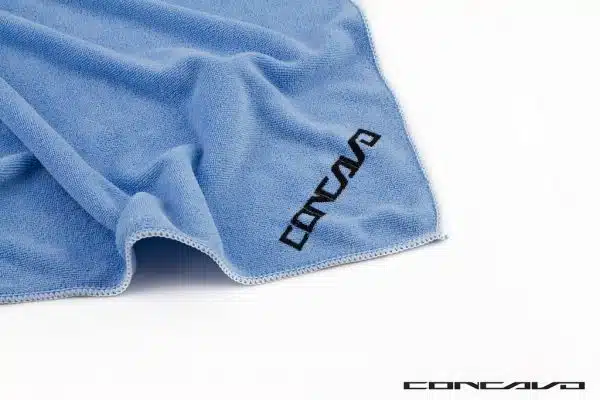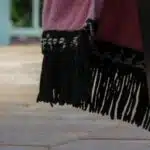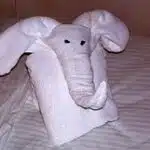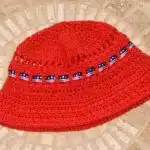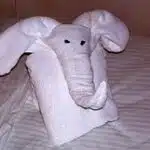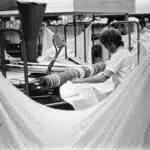As a textile care specialist, it is important to understand how to properly wash and care for different types of fabrics. Microfiber towels and cloths have become increasingly popular due to their ability to effectively clean surfaces without leaving streaks or lint behind. However, these specialized fabrics require specific handling in order to maintain their effectiveness and lifespan.
Microfiber towels and cloths are made up of tiny synthetic fibers that are woven together to create a soft, absorbent fabric. While they are designed to be durable and long-lasting, improper washing techniques can cause them to lose their effectiveness over time. By following a few simple steps, you can ensure that your microfiber towels and cloths remain effective for years to come while also maintaining their appearance and texture. In the following article, we will outline the proper techniques for washing microfiber towels and cloths in order to maximize their cleaning power and longevity.
Understanding The Composition Of Microfiber Fabric
Microfiber towels and cloths have become increasingly popular for cleaning tasks due to their unique composition. These towels are made from a blend of polyester and polyamide fibers, which are incredibly thin and fine. In fact, microfiber fibers are 1/100th the diameter of a human hair, giving them a greater surface area than traditional cleaning materials. This allows for deeper cleaning and more effective removal of dirt, dust, and grime.
One of the benefits of using microfiber towels is their ability to attract and hold onto dirt particles without the need for harsh chemicals. The fibers create a static charge that attracts dust and debris, making them an ideal choice for those with allergies or sensitivities to chemical cleaners. Additionally, microfiber towels are highly absorbent and can hold up to seven times their weight in water, making them great for cleaning up spills or drying surfaces.
While there are many benefits to using microfiber towels, it’s important to note that they do have some limitations. For example, they may not be suitable for use on delicate surfaces such as high-gloss finishes or certain types of wood. It’s also important to use the correct type of microfiber towel for each task as different weaves can affect its effectiveness. Overall, understanding the composition and capabilities of microfiber towels can help you make informed decisions about how best to use them in your cleaning routine.
Understanding the composition of microfiber fabrics is just one part of ensuring their effectiveness in your cleaning routine; proper washing techniques are also crucial. By using incorrect washing methods or products that contain fabric softeners or bleach, you risk damaging the fibers’ structure and reducing their effectiveness over time. Therefore, it’s essential to learn how to properly launder your microfiber towels so that you can continue enjoying their benefits for years to come.
Why Proper Washing Techniques Are Important
Proper washing techniques are crucial in maintaining the quality and effectiveness of your microfiber towels and cloths. These specialized cleaning tools require careful handling as they function with unique properties that differ from conventional fabrics. Neglecting to follow appropriate washing procedures can lead to damage, loss of absorbency, and reduced durability.
The Importance of proper washing techniques cannot be overemphasized. Microfiber towels and cloths are designed to trap dirt, dust, and bacteria without leaving any residue behind. They also dry quickly, promote faster cleaning times, and have a longer lifespan than traditional towels. However, these benefits can only be achieved if proper care is taken during laundering.
To ensure that you get the most out of your microfiber towels and cloths, it is essential to follow specific guidelines when washing them. This includes avoiding the use of fabric softeners or bleach, using mild detergents, avoiding high heat settings when drying, and separating them from other laundry items during washing. By following these steps carefully, you will be able to maintain the effectiveness of your microfiber towels for an extended period without compromising their quality.
- Did you know that improper washing techniques can reduce the lifespan of your microfiber towels?
- Are you aware that using fabric softeners on microfiber cloths can damage their unique properties?
- Do you know why sorting your laundry before washing is essential for maintaining the quality of your microfiber towels?
- Want to learn how to properly sort your microfiber towels before laundering? Keep reading!
Transition: Now that we understand the importance of proper washing techniques let’s take a closer look at how sorting our laundry before washing plays a significant role in maintaining our microfiber towels’ quality.
Sorting Your Microfiber Towels And Cloths
When it comes to washing microfiber towels and cloths, sorting them properly is key. By color coding your towels, you can separate them into different loads based on their intended use. For example, blue towels may be designated for cleaning glass surfaces while green ones may be used for general cleaning purposes. This helps ensure that each towel is washed with like items and prevents any cross-contamination.
Additionally, folding techniques can also help with sorting your microfiber towels and cloths. After each use, fold the towel in a specific way depending on its intended use. This will make it easier to sort them later on when it comes time for laundry day. Plus, by folding them neatly, you can help prevent any unnecessary wear and tear during washing.
Properly sorting your microfiber towels and cloths not only helps keep them organized but also extends their lifespan. By taking the time to color code and fold your towels correctly, you can ensure that they are washed according to their specific needs. In the next section, we will discuss pre-treating stains before washing your microfiber towels and cloths to further prolong their usefulness.
Pre-Treating Stains
After sorting your microfiber towels and cloths, it’s time to pre-treat any stains. This is an important step in ensuring that your towels are completely clean and ready for use. Removing stains from microfiber can be a bit tricky, but there are effective stain removers that you can use.
One of the most effective stain removers for microfiber is rubbing alcohol. Simply pour some alcohol onto the stain and let it sit for a few minutes before washing as usual. Another great option is using a mixture of white vinegar and baking soda. Apply the mixture to the stain and let it sit for about 30 minutes before washing.
It’s important to note that when pre-treating stains on microfiber, you should avoid using bleach or fabric softeners. These products can damage the fibers of the towel and reduce its effectiveness over time. By using effective stain removers like rubbing alcohol or vinegar/baking soda mixtures, you’ll be able to remove tough stains without damaging your microfiber towels. In the next section, we’ll talk about choosing the right detergent to ensure that your towels stay clean and fresh after every wash.
Choosing The Right Detergent
Types of detergents are important to consider when washing microfiber towels and cloths. It is recommended to use a mild detergent specifically designed for microfiber fabrics, as harsher detergents can damage the delicate fibers. These detergents typically have low levels of surfactants and no fabric softeners.
Environmentally friendly options are also available for those who prefer to minimize their impact on the environment. These options include plant-based, biodegradable detergents that do not contain phosphates or other harmful chemicals. It is important to note, however, that not all environmentally friendly detergents are suitable for microfiber fabrics, so it is crucial to check the label before using them.
Choosing the right detergent is crucial in maintaining the quality and longevity of your microfiber towels and cloths. Using a mild detergent specifically designed for these fabrics will ensure that they remain soft, absorbent, and effective at cleaning. In the next section, we will discuss why it is important to avoid using fabric softeners when washing microfiber towels and cloths.
Avoiding Fabric Softener
Choosing the right detergent is just one step in caring for your microfiber towels and cloths. Another important factor to consider is avoiding fabric softener. Fabric softeners can leave a residue on the microfiber material, reducing its effectiveness over time. Instead of using fabric softener, try using vinegar instead.
Vinegar is a natural fabric softener that can help keep your microfiber towels and cloths in top condition. Simply add half a cup of white vinegar to your laundry load during the rinse cycle. The vinegar will help break down any leftover detergent or dirt on the material, while also helping to eliminate any odors. This will leave your towels and cloths feeling softer and smelling fresher.
In addition to choosing the right detergent and avoiding fabric softener, it’s also important to air dry your microfiber towels and cloths whenever possible. This helps prevent any damage that may occur from high heat in the dryer, which can cause the fibers to melt or shrink. Air drying also has additional benefits such as preventing static cling and reducing wrinkles. By taking these simple steps, you’ll be able to extend the life of your microfiber towels and cloths while maintaining their effectiveness for years to come.
Transition into subsequent section: Now that we’ve covered how to choose the right detergent, avoid fabric softener, and air dry your microfiber towels and cloths, let’s move onto another important aspect of caring for them – selecting the correct water temperature for washing.
Selecting The Correct Water Temperature
Water temperature is a crucial factor in washing microfiber towels and cloths. As a textile care specialist, it is important to understand the impact of various water temperatures on microfiber fabrics. The right temperature can help to remove dirt and bacteria without damaging the fabric, while the wrong one can cause shrinkage and color fading.
Choosing the appropriate detergent when washing microfiber towels and cloths is equally important as selecting the right water temperature. It is recommended to use a mild detergent that does not contain bleach or fabric softener. Bleach can damage the fibers, causing them to break down over time, while fabric softener can create a coating that reduces their absorbency.
Avoiding chlorine bleach is particularly important when washing microfiber towels and cloths. Although it may seem like an effective cleaning agent, chlorine bleach can weaken the fibers of these fabrics over time. Instead, try using an oxygen-based bleach or vinegar for tough stains. These alternatives are gentler on the fabric and will help ensure its longevity.
By choosing the correct water temperature and detergent, you will be able to effectively clean your microfiber towels and cloths without harming them in any way. In our subsequent section about using the gentle cycle, we will explore how this setting can further enhance your laundry experience with microfiber fabrics.
Using The Gentle Cycle
After selecting the correct water temperature, the next step in washing microfiber towels and cloths is to choose the appropriate cycle. Many people opt for the gentle cycle, which is a great choice for delicate items. However, there are also alternatives to the gentle cycle that can be just as effective.
One alternative to the gentle cycle is hand washing. While it may seem time-consuming, hand washing has numerous benefits for microfiber towels and cloths. For one, it allows you to have more control over the cleaning process and ensures that every inch of the fabric is thoroughly cleaned. Additionally, hand washing minimizes wear and tear on microfibers, which helps them last longer.
If you do decide to use your machine instead of hand washing or using a gentle cycle alternative, make sure to avoid using fabric softeners or bleach as these can damage microfiber materials. Instead, opt for a mild detergent that is specially formulated for microfibers. Furthermore, always separate your microfiber towels from other types of laundry to prevent snagging or pilling during the wash cycle.
Moving forward with drying your microfiber towels and cloths…
Drying Your Microfiber Towels And Cloths
After washing your microfiber towels and cloths, it is important to dry them properly to preserve their quality and effectiveness. One of the best ways to dry microfiber is by air drying. Simply hang them up or lay them flat in a well-ventilated area, away from direct sunlight. This method not only prevents shrinkage, but also helps maintain the softness and absorption properties of the microfiber.
Another option for drying microfiber towels and cloths is using a dryer, but it must be done with caution. It is recommended to use a low heat setting and avoid using dryer sheets as they can leave residue on the fabric, reducing its absorbency. Additionally, do not overload the dryer as this can cause the towels and cloths to clump together and become less effective.
In summary, proper drying techniques are crucial in maintaining the quality of your microfiber towels and cloths. Air drying is recommended as it prevents shrinkage while preserving softness and absorption properties. When using a dryer, use low heat settings and avoid using dryer sheets to prevent residue buildup on the fabric. In the subsequent section, we will discuss how to avoid high heat when caring for your microfiber products.
Avoiding High Heat
Despite the convenience of using a dryer to dry your microfiber towels and cloths, it is important to avoid high heat. High temperatures can damage the fibers, causing them to lose their effectiveness in cleaning and absorbing moisture. This can result in streaks or scratches on surfaces and reduce the lifespan of the cloth.
To avoid high heat when drying microfiber towels and cloths, air drying is the best method. Not only does this prevent damage from high temperature, but it also has several benefits for your textiles. Air drying helps to maintain the integrity of the fibers, so they continue to clean effectively. It also saves energy and money by eliminating the need for a dryer.
Here are some tips for air drying your microfiber towels and cloths:
- Hang them up on a clothesline or drying rack
- Avoid wringing out excess water as this can damage the fibers
- Flatten them out while damp to prevent wrinkles
- Store them in a dry place once fully dry
By avoiding high heat when drying your microfiber towels and cloths, you can ensure that they remain effective at cleaning and last longer. Not only that, but air drying provides other benefits such as energy savings and maintaining fiber integrity. In the next section, we will discuss how to fluff your towels and cloths after air drying without damaging their delicate fibers.
Fluffing Your Towels And Cloths
After avoiding high heat when washing your microfiber towels and cloths, it’s time to focus on fluffing them. This is an essential step to ensure that your towels perform at their best for longer periods. Fluffing microfiber towels and cloths involves a special technique that textile care specialists recommend.
Technique tips for fluffing microfiber towels and cloths include shaking them out before folding or hanging them up. This helps to release any dirt or debris that might be trapped in the fabric. You can also fluff your towels by brushing them with a soft-bristled brush or using a fabric softener designed for microfiber materials.
Common mistakes people make when fluffing their microfiber towels and cloths include using too much fabric softener or not allowing enough time for the towels to dry completely before storing them. When you use too much fabric softener, it can leave residue on the towel fibers, which reduces their absorbency. On the other hand, when you don’t allow enough drying time, moisture can get trapped in the fibers, leading to mold growth and unpleasant odors.
Transition: Now that you have learned how to wash and fluff your microfiber towels and cloths correctly let’s talk about how to store them properly.
Storing Your Microfiber Towels And Cloths
- Microfiber towels and cloths should be folded immediately after use to help maintain their shape and texture.
- To properly organize your microfiber towels and cloths, store them in a closet or drawer that is breathable and dry.
- Microfiber towels and cloths should be washed with a mild detergent and cold water to ensure a long lifespan.
- After washing, microfiber towels and cloths should be air-dried on a flat surface to prevent them from shrinking or becoming misshapen.
- Do not use fabric softeners, bleach, or other harsh chemicals when washing microfiber towels and cloths.
- To maintain the quality of your microfiber towels and cloths, it is important to fold, organize, and air-dry them properly.
Folding
Proper folding of your microfiber towels and cloths is crucial to ensure their longevity and maintain their quality. A good fold will prevent the fabric from creasing or wrinkling, which can damage the fibers and reduce absorbency. To achieve a proper fold, start by laying the towel flat on a clean surface. Then, fold the towel in half lengthwise, so that the two shorter ends meet. Next, fold it in half again, this time widthwise, so that all four corners are aligned.
Space-saving storage is essential when it comes to organizing your microfiber towels and cloths. Proper folding can help maximize storage space while keeping your towels or cloths easily accessible. Once you have folded your towels or cloths neatly, stack them together in a pile with other similar sized items. Alternatively, you can roll them up tightly, which not only saves space but also makes them easy to grab when needed.
It’s important to remember that how you store your microfiber towels and cloths can affect their performance and lifespan. Proper folding and space-saving storage are simple steps you can take to ensure your towels and cloths stay in excellent condition for longer. With these tips in mind, you’ll be able to keep your cleaning arsenal organized and ready for action at any time!
Organizing
Proper storage of your microfiber towels and cloths is essential to maintain their quality and extend their lifespan. In addition to proper folding, organizing them in a closet or on shelves can also help prevent damage and make them easily accessible when you need them. Packing tips can also come in handy if you’re traveling with microfiber towels.
When organizing your microfiber towels and cloths, consider grouping similar items together based on size or purpose. This can help you quickly locate the item you need without having to dig through a pile of different types of towels or cloths. Closet organization tools such as shelf dividers or hanging organizers can also be useful for keeping your microfiber cleaning supplies neat and tidy.
If you’re packing your microfiber towels for travel, consider rolling them up tightly instead of folding them to save space. Place them in a bag or suitcase where they won’t get crushed by other items. Keeping a few microfiber towels and cloths with you while traveling can be helpful for wiping down surfaces or cleaning up spills on the go. With these packing tips and closet organization strategies in mind, you’ll be able to keep your microfiber cleaning supplies organized and ready for use whenever you need them.
Air-Drying
As a textile care specialist, it is important to properly store your microfiber towels and cloths to maintain their quality and extend their lifespan. However, proper storage is not the only thing to consider when taking care of these cleaning supplies. The method of drying after use can also have an impact on its longevity.
Air-drying is one of the best methods for drying microfiber towels and cloths. The benefits of air-drying include preventing shrinkage and damage that may occur from using high heat in dryers, as well as minimizing the risk of damaging the fibers with fabric softeners or dryer sheets. To air dry your microfiber towels and cloths, simply hang them up or lay them flat on a clean surface until they are completely dry.
For those who need their microfiber towels and cloths to dry faster, there are some tips that can be followed. One tip is to wring out any excess water before hanging or laying them out to dry. This will help speed up the drying process by removing excess moisture. Another tip is to place them in a well-ventilated area with good air circulation such as near an open window or fan.
In conclusion, proper storage and air-drying techniques are essential for maintaining the quality and extending the lifespan of your microfiber towels and cloths. By following these tips for faster drying and utilizing the benefits of air-drying, you can ensure that your cleaning supplies are always ready for use when you need them.
Using Microfiber-Specific Cleaning Products
For individuals who work in environments that require the use of microfiber towels and cloths, it is important to be aware of the proper cleaning methods for these materials. In cases where it is necessary to use specific cleaning products, there are a variety of options available. For instance, one such product is Micro-Restore, which is designed specifically for removing dirt and oils from microfiber materials.
In addition to specialized cleaning products, there are alternative cleaning methods that can be used to clean microfiber towels and cloths. One eco-friendly option involves using vinegar in place of fabric softener. This method not only helps to break down any remaining dirt or grime on the material but also eliminates any odors that may have accumulated over time. Another alternative method involves washing the materials in cold water with a mild detergent before allowing them to air dry.
When considering the best way to clean microfiber towels and cloths, it is important to consider both the effectiveness of the cleaning method as well as its impact on the environment. Utilizing eco-friendly options such as vinegar or air drying can help minimize environmental impact while still ensuring that your microfiber materials remain clean and long-lasting. With proper care and attention, these materials can continue to serve you well for years to come.
Transition: Now that we’ve covered some alternative cleaning methods for microfiber towels and cloths, let’s take a closer look at some common issues that may arise during their use and how they can be addressed.
Troubleshooting Common Issues
Using microfiber-specific cleaning products is an essential part of maintaining the quality and longevity of your microfiber towels and cloths. However, it is equally important to ensure that you are washing them correctly. Common mistakes in washing microfiber towels include using fabric softener or bleach, washing them with other materials, and using high heat settings on your dryer.
To prevent these issues from occurring, always wash your microfiber towels separately from other fabrics. Use cold or warm water settings and avoid using fabric softeners or bleach. Instead, opt for a mild detergent specifically designed for use with microfiber materials. Always air dry your microfiber towels or use a low-heat setting on your dryer.
Handling damaged microfiber requires special attention as well. If you notice that your towel has become less absorbent or has started to develop holes, it may be time to replace it. To maintain the longevity of your remaining towels and cloths, make sure to follow proper washing techniques and preventative measures. By doing so, you can extend the life of your microfiber cleaning supplies and continue to enjoy their benefits for years to come.
Table:
| Common Mistakes | Preventative Measures |
|---|---|
| Washing with other fabrics | Wash separately |
| Using fabric softener/bleach | Avoid entirely |
| Using high heat settings on dryer | Air dry or use low-heat setting |
As a textile care specialist, I recommend taking extra care when handling microfiber towels and cloths. These materials require specific care instructions to maintain their effectiveness over time. By following the guidelines outlined above, you can ensure that your cleaning supplies remain in top condition for as long as possible.
In order to maintain the longevity of your microfiber towels and cloths, it is important to establish good habits early on. With regular preventative measures such as proper washing techniques and avoiding common mistakes like using fabric softeners or bleach, you can keep your cleaning supplies in excellent condition. By doing so, you can continue to rely on your microfiber towels and cloths for all of your cleaning needs.
Maintaining The Longevity Of Your Microfiber Towels And Cloths
To maintain the longevity of your microfiber towels and cloths, it is important to follow proper washing and drying techniques. Maximizing absorbency is a key factor in maintaining the effectiveness of these textiles. To do this, avoid using fabric softeners or dryer sheets as they can clog the fibers and reduce their ability to absorb moisture.
Reducing wear and tear is another important consideration when caring for microfiber towels and cloths. To prevent damage, always wash them separately from other fabrics, especially those with rough surfaces or zippers that can cause pilling or snagging. Additionally, use a gentle cycle with cold water and avoid bleach or harsh chemicals that can break down the fibers.
After washing, hang or lay flat to dry instead of using a dryer. High heat can damage the fibers and reduce their effectiveness over time. By following these simple steps, you can ensure that your microfiber towels and cloths last longer and continue to provide maximum absorbency for all of your cleaning needs.
Conclusion
Microfiber towels and cloths have become increasingly popular due to their superior cleaning capabilities, but it’s important to understand how to properly care for them in order to maintain their effectiveness. As a textile care specialist, I recommend sorting your microfiber items by color and pre-treating any stains before washing. Additionally, using a detergent specifically designed for microfiber fabrics can help preserve their quality.
Storing your microfiber towels and cloths properly is also crucial. Avoid using fabric softeners or dryer sheets as they can clog the fibers and reduce absorbency. Instead, air dry or use a low heat setting when laundering. By following these steps, you can ensure that your microfiber towels and cloths remain effective for years to come.
In conclusion, understanding the composition of microfiber fabric and implementing proper washing techniques are essential for maintaining the longevity of these cleaning tools. With the right care, you can continue to enjoy the benefits of microfiber’s superior cleaning abilities while also extending the life of your towels and cloths. Trust in these proven methods and your microfiber items will serve you well for years to come.
Image Credits
- “CONCAVO LIGHT BLUE MICROFIBER TOWEL” by Concavo Wheels (featured)

